This plant has an unusual name and a beautiful appearance - this is a bow slim. Many gardeners do not like to grow this grade of Luke, and in vain, because in this plant contains a lot of useful substances. We learn more, how to grow onions slim yourself.
You do not know why this plant has such an unusual name? It turns out, everything is simple if the stem of an adult plant is broken in half, a lot of mucus flows out of it. Luke juice juice is very useful as the bulb itself. Therefore, not only feathers (or leaves) can be used in food, but also the bulbs. What is this garden culture famous, let's learn more.
Bow slim. Short description
Plant is perennial, herbaceous. It is widely in the Altai in the wild, you can see onion plantations in Siberia, so the second name of this plant "Luk-Sibiryak" is very common. In Transbaikalia, you can also meet this plant, the locals dubbed this healthy plant as "Mangyr".
Leaves or stems at bows thick, at the end spin. They have a lot of juice, so they easily break. The width of one sheet is 2 cm, and the length of up to 30 cm, the ripe leaves begin to twist and resemble the semblance of a spiral. The taste of onion juice is unusual - garlic, weakly sharp, so the bow is part of many diets, and also turns on the diet of baby food.
Adult plant bulbs have a cylindrical shape. These are false bulbs, attach to the rhizomet and grow well. The root system has a powerful plant.
For the second year, sowing the bow produces the arrows, an umbrella appears in the form of a bowl with pale pink flowers. The arrow itself is very tough, reaches a length of up to 70 cm, the bouton is in the punch state, and before the umbrella opens, straightens. Flowers onion slim from mid-July.
Bow slim. Photo:
The useful properties of Luca Lyzun
Before proceeding to the cultivation of this species of Luke, we learn its positive parties. Thus, in the leaves or feathers of the bow, there is a lot of iron, as well as vitamins of group B, RR and C. In addition, there are phytoncides, carotene, mineral salts, magnesium, potassium and molybdenum in the leaves of the onions. But the most important advantage of Luke Luzun is that there are many iron in feathers. Many people in the old man are called this plant "ferrous".
The taste from the bow of the mucin is an unusual, not characteristic onion, but with a gentle aroma of garlic. You can eat this plant entirely as the feathers themselves and a bulb. It helps the plant get rid of many diseases, but first of all - will improve the condition of the patient with a small-class, because it increases blood hemoglobin. In addition, the bow of the slimong is useful to those people who suffer from increased acidity of the stomach, just juice (or mucus) contributes to the normalization of acidity, helps to cope with the problems of digestion, and will also remove pain and inflammation (if attached a piece of leaf to fresh abrasion or scratch) .
And that is not all! If you compare the bow slim with such popular fruit as apples or pears, as well as other fruits and vegetables, then 10 kg of onions contain a 12-month stock of all necessary useful substances for normal human life. It turns out to be replenished with vitamins, especially during the cold season, eat almost 30 g onions per day.
The special use of Luke is smeared in the fact that all useful substances are grateful to our organism and are well absorbed. It will help onions to establish work not only the stomach, but also strengthens the vessels, improve the work of the heart muscle, will help in the work of the thyroid gland, blood formation organs, contributes to strengthening the nail plate and hair.
Like the whole family of onion, if you eat at least a bit of onions daily (and inclined), then you can strengthen your immunity and prevent the development of avitaminosis.
Growing onion slimun
What you need to know before proceeding to cultivation on your household plot of this garden culture? The plant is spreadable, the average growth duration is 4-5 years. Every year new shoots are formed with new juicy leaves (up to 10 pcs.) Their number increases and already for the 4th year of life is up to 20 shoots, and leaves - up to 200. From this period, the ability to form shoots from the plant decreases, branches gradually die away. New shoots, as well as the leaves are not formed, so the onions of the muffled in one place are inexpedient.
You must be prepared for the fact that this plant blooms only for the second year, so you can enjoy blossoming and collect seeds only a year after the landing of Luzanun.
How the bow is multiplied - only by seeds or separation of an adult plant on bushes. Seeds can be immediately sowed into the soil, but it is best to grow seedlings at home.
Landing seeds in open ground is carried out or in the autumn or in the spring. If you want to plant the bow of the slim on its plot after the winter, then do it as soon as snow comes. Seeds will "sit" in wet land and wait for their o'clock, and as soon as the sun priges, after 2 weeks, the first searches will appear.
If for different reasons you missed the seeds of seeds in early spring, then you need to ensure a permanent watering so that the land does not remain dry.
Improve the germination and keep moisture in the soil will help the shelter of crops with polyethylene film.
Bow slim. Growing from seeds:
- The choice of place for landing is a plot on the garden after the cultivation of cabbage or tomatoes. These garden crops still have to move to a new place every year, so boldly occupy this site.
- Consider the frost resistance of the plant and do not forget about the regular moistening of the soil: watering 1 time in 5-6 days.
- Source requirements: peat mixture, fertile loams - just what is needed for the cultivation of the junction of the slim. Before gathering to plant a bow, you need to feed the soil with a nutrient mixture: add compost or manure (exclusively overwhelming), on 1m 2 We introduce no more than 6 kg of manure.
- Seeding: If the heat is weak, then the seeds are laid in advance prepared grooves to depth to 1 cm. If you decide to plant onions in the middle of May.
- After you planted seeds, you need to compact the soil, only slightly, so as not to disrupt the exchange of oxygen.
- Groans do at such a distance: 10, a maximum of 15 cm from each other.
- When the plants go up and fixes, it is necessary to have thinning, we leave 1 seedling every 10-15 cm.
- Pour the soil regularly to get delicate and juicy leaves.
- Care is as follows: Regular soil looser (depth up to 5 cm). Be sure to loosen the land after the rains and irrigation.
- If you have enough time, you must adopt the bow of the slop. For the first time you can make a liquid fertilizer, add 1 tbsp of urea, the second time - only liquid fertilizer is introduced.
- To grow faster to faster, you can cover the plant with a film. If you have enrolled, then the first harvest fee can be collected for a couple of weeks earlier. The leaves are allowed to cut when they reach 20 cm growth.
Tips for gardeners or how to collect a rich harvest
It is not difficult to grow the bow of the slop, the vegetable is not afraid of frosts, so it can not even be covered. Withstands strong frosts, up to -40 oC. The yield of this culture, as it has already become known - not more than 4-5 years, then you need to sow onions again.
It is very good that this garden culture is not afraid of pests and diseases. To assemble a good harvest of juicy and large leaf onions, it is necessary to put it in place, where last year you grown tomatoes, cabbage, as well as potatoes and cucumbers. It is extremely undesirable to allocate a plot for landing, if in it last year you grown onions and garlic.
If the soil on your area is acidic, then the leaves become bitter, it is possible to avoid this if you make chalk or dolomite flour into the soil.
In the fall, do not forget to make feeding: humus, manure (overworked) or compost, and in the spring you can add some more compost (only half a bucket). Mineral feeders are suitable: potash salt and superphosphates. Nitrogen fertilizer is made only with the onset of spring.
By the way, if you all thought out in advance and decided to grow a bow slim from seeds, then you are best at the selected site to plant siters to improve the quality of the soil and get rid of diseases and pests.
We make on the row of a row of 40 cm long, the distance is 15 cm. It is very important to observe the distance between cultures, since the rhizomes grow up in the form of a semicircle and can exhibit neighboring plants (if there is not enough space). It is possible to limit the growth if planted onions in plastic containers with a cropped bottom or to build sides.
Cut the harvest of young leaves can be 3-4 times per season, just before the onset of frosts still will remain a little time so that the leaves are growing and not afraid of frosts.
If you have chosen an early grade of Luke Luzun, then 30 days after landing, you can collect the first harvest, the middle-timed varieties ripen a little later - after 1.5 months.
Fully cut leaves are prohibited, it is necessary to do it selectively and cut only those leaves that have reached a rise of 30 cm, it is necessary to cut them together with the root. The plant will not be worse from this, on the contrary, such a trimming stimulates onions and leaves will grow even faster. In such young shoots there are many ascorbic acid. If the sockets are not developed, then the leaves are allowed to cut out not in a row, but selectively, retreating from the ground 7 cm.
For the second year, with the onset of spring, the bow must be contacted - to make a potash salt and ammonium salter (no more than 5 g per 1m 2) or superphosphates - 10 g. After cutting, you also need to fow the plant. Organic fertilizers can be applied, only they need to be diluted with liquid manure or herbic decoction.
If you grow onions to eat young leaves, then the flowers need to be removed so that all nutrients are directed into the growth of leaves. To collect seeds, leave a couple of bushes, and on the rest of the bushes you can cut the flowerons.
Watering into the hot period, the onions is simply necessary, as well as to free from weeding grass on time, loose and mulch the soil, make feeding. In addition, you need to remove the flowerons and dry leaves. If you do not comply with these recommendations, the onions will survive, only the quality of the leaves will be bad - they will become rude, bitter and useful properties will be reduced.
Seeds can be assembled independently after the bloomer pleases. This will happen in September. It is necessary to cut the dry head and fold the umbrellas to dry. The germination of such seeds will be preserved for 3-4 years.
The timing of sowing its own seeds to seedlings is the beginning of March, so that the plants are rooted to frosts. Dates of sowing seeds in open ground - the end of April.
Cultivation of seedlings:
- to improve the germination of the landing material, you need to soak in warm water for 24 hours, and then add a little. Soil before planting moistened. If seeds are a bit, then you can accommodate a small container and use the purchased ground. Then you don't have to fight sprouted weeds (if the land took from the site);
- it is necessary to moisturize the soil immediately after the landing, only from the spray gun is not blurred, and then it is recommended to cover the container or box with seeds of the film;
- if you grow onions to seedlings, then the grown seedlings need to be divert, and on the site it is allowed to fall out only after May 15;
- if you immediately sowed the seeds, then the thinning of the garden culture should be carried out only for the 2nd year, leaving a distance of 20 cm between the sprouts.
For the 2nd year, expect blossoms to admire the beauty of this plant. Only for 3-9 can be cut off the leaves. If you want to gather harvest faster, try to grow onions slim in a greenhouse.

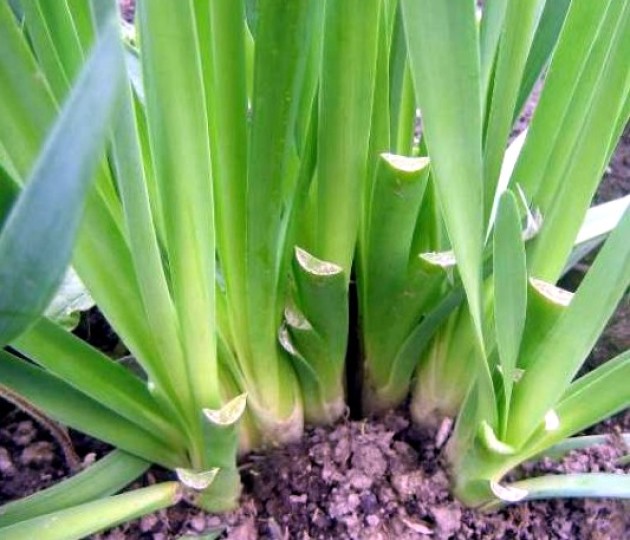
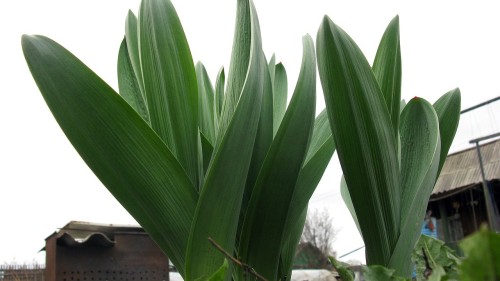
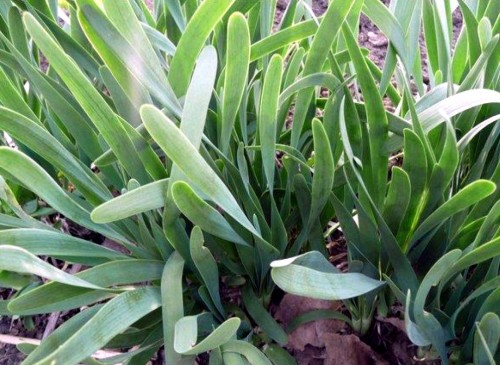

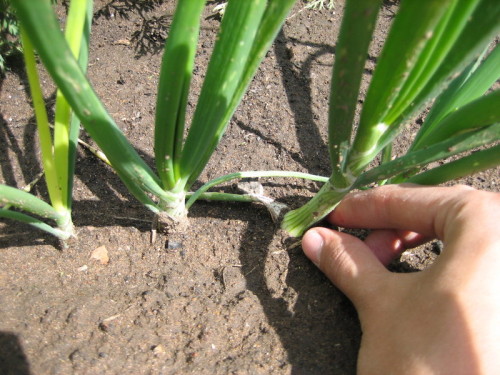
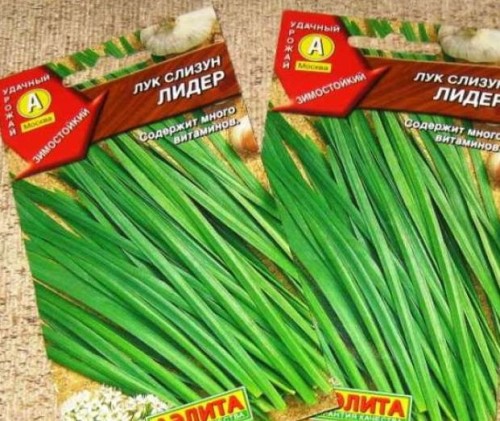
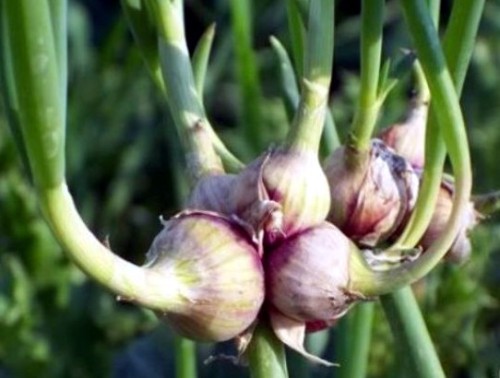
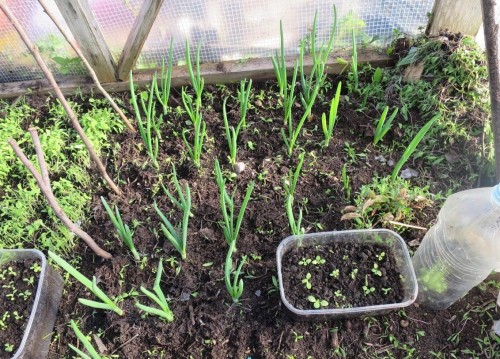












 Start a discussion ...
Start a discussion ...